
The Coronavirus (an RNA virus) that affects humans in the COVID19 pandemic has the full name of SARS-CoV-2. Many cat owners have questions about how this may – or may not – affect their own cat as well as domestic cat populations.
This article is an explainer of the science behind what we know about feline coronavirus infections generally, as well as COVID-19 in cats specifically, to date.
Quick Overview: Coronavirus In Cats
 Other Names: Feline enteric coronavirus, FeCV, feline infectious peritonitis, FIP; Sars-cov-2, COVID-19.
Other Names: Feline enteric coronavirus, FeCV, feline infectious peritonitis, FIP; Sars-cov-2, COVID-19.
 Common Symptoms: FeCV/FIP: bloated, swollen abdomen, lethargy, neurologic signs like poor balance (vestibular) and seizures. COVID-19: mild upper respiratory symptoms like sneezing, coughing, and eye discharge; mild digestive signs like vomiting and decrease in appetite.
Common Symptoms: FeCV/FIP: bloated, swollen abdomen, lethargy, neurologic signs like poor balance (vestibular) and seizures. COVID-19: mild upper respiratory symptoms like sneezing, coughing, and eye discharge; mild digestive signs like vomiting and decrease in appetite.
 Diagnosis: Antibody testing for FeCV (only tests exposure, which is common in cats but not confirmatory for FIP); Samples of abdominal fluid can be supportive of FIP. Real time PCR and serologic testing for COVID-19 coronavirus.
Diagnosis: Antibody testing for FeCV (only tests exposure, which is common in cats but not confirmatory for FIP); Samples of abdominal fluid can be supportive of FIP. Real time PCR and serologic testing for COVID-19 coronavirus.
 Requires Ongoing Medication: No
Requires Ongoing Medication: No
 Vaccine Available: Not for COVID-19 for cats; for FeCV there is a vaccine but it is not recommended by the American Association of Feline Practitioners (AAFP) because by the time most cats reach the age to qualify for the vaccine at 16 weeks, they have likely already had exposure to FeCV. The FeCV vaccine provides no cross protection for COVID-19.
Vaccine Available: Not for COVID-19 for cats; for FeCV there is a vaccine but it is not recommended by the American Association of Feline Practitioners (AAFP) because by the time most cats reach the age to qualify for the vaccine at 16 weeks, they have likely already had exposure to FeCV. The FeCV vaccine provides no cross protection for COVID-19.
 Treatment Options: FIP that results from FeCV infection is generally fatal with no approved treatment. A newer medication that is not available in the US shows some promise but evidence for use is still not well founded. All evidence shows that cats contracting COVID-19 have mild, transient signs that resolve on their own after several days.
Treatment Options: FIP that results from FeCV infection is generally fatal with no approved treatment. A newer medication that is not available in the US shows some promise but evidence for use is still not well founded. All evidence shows that cats contracting COVID-19 have mild, transient signs that resolve on their own after several days.
 Home Remedies: None.
Home Remedies: None.
The History of Cats and Coronavirus Infection
The situation about cats and Coronaviruses was complex before the global pandemic, and now it is even more complicated. The most well-known aspect of this is the background to Feline Infectious Peritonitis, which is caused by a Feline Coronavirus (FCov). This is one of the more common serious infectious diseases to affect pet cats.
The issue starts with an enteric (intestinal) Feline Coronavirus known as Feline Enteric Coronavirus (FeCV) that’s found in 80-90% of cats living in multicat households and catteries. Viral replication and virulence are at a high level, affecting cats from just a few weeks of age to several years of age. Nearly all of these infections are harmless, with no signs of illness, or just mild signs of diarrhea.
The virus is shed in the feces, spreading easily between cats, commonly via litter boxes, surviving in the environment for up to seven weeks. A new young cat in a household will be infected orally, mostly via contact with litter trays or boxes. Direct spread of this viral infection from cat to cat rarely happens.
Following FeCV infection, the virus can be found in the gastrointestinal tract and the blood for a short period, and then may be shed in the feces, for weeks, months, or in some cases, for life. However, in a very small proportion of FeCV-infected cats, the relatively benign virus mutates to become the Feline Infectious Peritonitis Virus (FIPV) virulent biotype, which goes on to cause Feline Infectious Peritonitis (FIP).
The development of FIP is a complex series of events, involving the immune response and macrophages interacting with pathogens in specific ways. Signs of illness include weight loss, a swollen abdomen, and other signs. Researchers in veterinary medicine such as Niels Pedersen and Diane Addie have carried out exceptional work on understanding the pathogenesis of this disease.
For more details about this condition, including how to make a definitive diagnosis of FIP (e.g. biopsy of granulomatous lesions), as well as discussions of treatment of this often fatal disease, please read the specific article about Feline Infectious Peritonitis elsewhere on this website.
The new pandemic-linked Coronavirus (SARS-CoV-2) is completely different again, and it can affect cats in a very different way to Feline Enteric Coronavirus: the rest of this article will cover this topic.
For the sake of ease of understanding, for the remainder of this article, Coronaviris (SARS-CoV-2) has been referred to simply as COVID-19.
How Do Cats Get Coronaviris (Sars-Cov-2)?, the Cause of COVID-19
Although no transmission from animal to human has been documented, studies have found that cats can be infected with COVID-19 virus, and that infected cats can transmit the virus to other cats. One study from Wuhan found that multiple cats in an area had detectable virus, or antibodies suggestive of prior infection with the virus, and that cats with the highest virus load shared households with infected people.
The suggestion is that healthy cats primarily pick up the COVID-10 virus from infected humans, not from other cats, although the latter does remain a possibility.
The science behind this is based on how the virus enters cells: SARS-CoV-2 binds to Angiotensin-Converting Enzyme 2 (ACE2) receptors as part of the infection process in humans. It is thought that the virus may be able to bind to ACE2 receptors in cats in the same way, then being able to enter cat cells.
How COVID-19 Affects Cats?

A cat coughing doesn’t always necessitate a trip to the vet, but in some cases, a vet visit may be essential. Your vet can help you to identify and resolve the underlying cause of your cat’s cough.
There have only been a small number of cats in real world situations (i.e. not in the laboratory) that are known to have fallen ill with COVID-19. In one case in Belgium, the cat developed mild gastrointestinal and respiratory signs, making a full recovery within ten days.
In two cats from New York that were infected, both had mild respiratory signs and made a full recovery. In other cases, lethargy, mild respiratory, or digestive clinical signs (sneezing, coughing, ocular discharge, vomiting, and anorexia) have been noted.
As well as the above examples, a small group (less than thirty) of dogs and cats in the UK developed signs of myocarditis 3 – 6 weeks after their owners had developed COVID-19 respiratory symptoms and tested PCR positive for COVID-19.
In the cases that were experimentally infected in a laboratory, the cats showed no signs of disease.
It may be that many other cats have been silently infected, especially if they have been in close contact with COVID positive people, but there is no evidence that this has been happening. There is certainly no evidence that if it did happen, cats might infect humans. This is not thought to be a significant risk.
Clinical Signs of COVID-19 in Cats
The clinical signs of COVID-19 in most affected cats seem to be very mild, with either gastrointestinal signs (vomiting and/or diarrhea) or respiratory signs (sneezing/ coughing, ocular discharge) along with lethargy and anorexia. To date, all known cases have made full recoveries.
The recent small group of cats and dogs diagnosed with myocarditis linked to COVID-19 in the UK, showed signs of lethargy, inappetence, syncopal events (fainting), tachypnoea/dyspnea (fast or labored breathing).
The true prevalence of COVID-19 in cats is unknown, partly because a high number of infected animals may show no signs at all, and because there is not thought to be a significant risk to humans, even if the cats were positive, so this has not generated high levels of research interest.
Diagnosis of COVID-19 in Cats
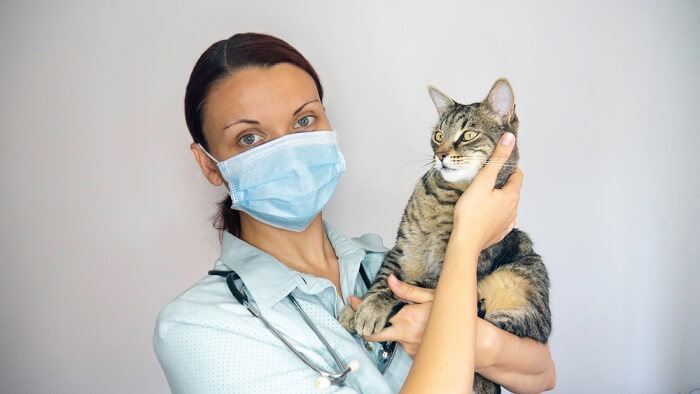
It’s very likely that your veterinarian may carry out routine blood work, including the usual panel of diagnostic tests and biochemistry profiles.
If COVID-19 is suspected in a cat, it is likely that the usual veterinary diagnostic routine would be followed by your DVM veterinarian.
1. Detailed History Taking
Your vet will discuss every aspect of your cat’s condition and overall cat health, including the history of COVID-19 cases in humans in the household.
2. Physical Examination
Your veterinarian will check your cat over carefully, checking for the signs of COVID-19 in cats as listed above. Your vet will carry out auscultation of your cat’s chest (listening with a stethoscope), listening to the lungs as well as assessing your cat’s heart rate and sounds.
3. Routine Blood Tests
It’s very likely that your veterinarian may carry out routine blood work, including the usual panel of diagnostic tests, such as hematology (blood cell count) and biochemistry profiles. This is important to rule out other causes of the signs that have been seen.
4. Specialised Virus Tests
If COVID-19 is suspected, the two main tests that may be considered would be:
- RT-PCR: a Polymerase Chain Reaction test (PCR test) on a swab to search for genetic material (antigen) specific to the virus (e.g. the spike protein): positive results indicate that the virus is present in the cat’s system. This can be done on a swab from the oral cavity or rectum, depending on the signs shown by the cat.
- Serology: a blood sample is tested for the presence of specific FCov antibodies to the COVID-19 virus: a positive antibody titer would indicate that the cat’s immune system has reacted to exposure to the virus by producing antibodies.
5. Other Tests

Other investigations, including x-rays, ultrasound examination, electrocardiograms (EKGs), urine tests and others may be carried out as part of a general investigation into your cat’s illness: these are not specific to COVID-19.
The recent UK cases that suffered myocarditis were shown to have congestive heart failure which was confirmed on thoracic radiographs, and the presence of significant ventricular arrhythmias (irregular heart beats) were identified on electrocardiographic (EKG) recording.
Your veterinarian will advise you on which detailed investigations are needed.
Treatment of COVID-19 in Cats
COVID-19 in cats seems to only cause mild signs of illness that are self-limiting, with all cats making a full recovery. There is no need for any specific treatment: simple, supportive care, using a general approach to ease any signs of illness, is all that’s needed. Antiviral treatment does not seem to be indicated.
If treatment was needed, options might include an antiviral product such as interferon (both feline and human recombinant products).
In the UK cases that were linked to myocarditis, all affected animals improved with cage rest, oxygen therapy, short term diuretics and, in some cases, anti-arrhythmic therapy with sotalol and fish oil supplementation, before being discharged on oral medications after a few days of intensive care.
Prognosis of COVID-19 in Cats
The prognosis for cats with COVID-19 is very good, to date, with all affected cats making a full recovery.
Note: We continue to learn more about COVID-19 as time passes, and this page will be updated if any significant new findings become apparent.
Frequently Asked Questions
What are the symptoms of COVID-19 in animals?
The signs of COVID-19 in animals are generally mild, affecting the respiratory system (coughing, sneezing, ocular discharge) and the gastrointestinal system (vomiting and diarrhea).
There has been a small number of cases of dogs and cats that have suffered mild myocarditis following exposure to COVID-19: signs have included lethargy, inappetence, syncopal events (fainting), and tachypnoea/dyspnea (fast or labored breathing).
Can pets spread COVID-19?
With our current knowledge, it is believed that dogs and cats are unlikely to play any role at all in the transmission to humans of the pandemic virus.
What animal species can get COVID-19?
Studies have shown that a wide range of animals, including cats, dogs, ferrets, hamsters, non-human primates, minks, tree shrews, raccoon dogs, fruit bats, and rabbits are susceptible to COVID-19 infection although there is no evidence that they play a role in spreading the virus to humans.
Can COVID-19 spillover from infected humans to animal?
Infected humans can inadvertently infect animals with the COVID-19 virus following close personal contact. For this reason, if anyone is unwell with COVID-19, they should avoid contact with the animals in their home as much as possible, to minimise any risk of passing on the virus.
Disinfectants and social distancing should be used judiciously, in the same way as we humans use these methods to minimise any risk of viral transmission.
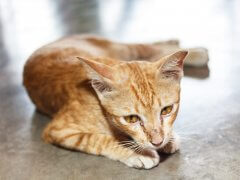

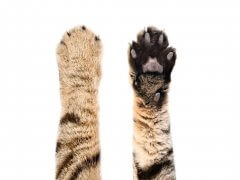
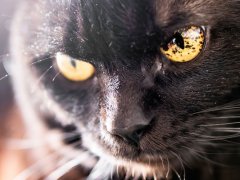



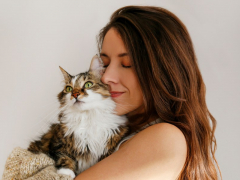
Sept 2022, I got CoVid, and by the time my cats started showing signs, the 1yr old, had the hairball sounding raspy cough, little bit of eye crust. But acted like nothing was bothering her. The 8week old kitten… Day 1 here eyes glued shut , coughing, but didn’t seem too bothered, Day2 she couldn’t move, breathing was labored, forced fluids, and and vibrating like chest percussions with my hand, when I had to lay her down for a little while I laid her on a thin blanket on top of the washing machine set on spin cycle with a slight unbalanced load – dadadadadadada
All was working alas I gave out, sick myself, I started falling asleep…. I remember the blood curdling screech she let out as she was probably panicking from suddenly not being able…. I vaguely remember saying, it’s ok lil one, daddy didn’t leave you, I’m right here, your ok lil one.. I didn’t even open my eyes I was so tired. I live alone with my 2 cats, but I vividly remember after the screech from the kitten as I was telling her, 🥹 I’m right here, your ok, your going to be fine, I’m right here…. A comforting soft whisper told me “Sleep” . I’m guessing that was the good Lord. 20 mins had passed and suddenly I shot up out of it realizing what had was going on she had the faintest pulse and was already gone cold was starting to stiffen. I trying everything, epr, chest percussions. It was truly… The most heart breaking experience I think I’ve ever had, a life that was solely dependent and needed my attention for every breath it continued to take… I failed, I let Little One down.. I try to tell myself it was enviable or Lord knew I wasn’t giving that one up willingly so he forced me to rest. I’m sorry I turned this into a therapist session, I didn’t intend to, it just… CoVid has wiped parts of my family out, and seemingly left the rest of us, in a fog. I live alone and at only 40 yrs old after heat stroke and repeated CoVid variants and a phzier vac + booster… It’s complicated to explain, I can remember so much, but the time. Where I’m currently at, what I’m currently doing. I’m lost in a fog. Late for everything, asked questions, giving blank stare, I hear, but sometimes it doesn’t register. On the brink of legally not being able to care for myself I imagine. I have no children, SSI disability was cut off with no doctor ok in 2017 and I couldn’t afford the attorney. No medical insurance, no dental, no food stamps, it’s bleak. My cats are all I have, one passed the other survived. I have another kitten now, she’s 4 months and all 3 are showing signs of Kraken. Were all so tired . I’m so sad I won’t be I can’t move as much this round regardless of the price these girls have stayed right by my side. Family till the bittersweet end
Hello Matt, that’s incredibly rough. I’m sorry you’ve had to go through all of this, from the loss of your kitten to the brain fog. I would suggest that, unless you have confirmed that your cats had covid-19, considering that they may have/have had a feline URI from another virus. There are a variety of treatment options, and you might learn more from our article on the subject. Wishing you and your kitties all the best.